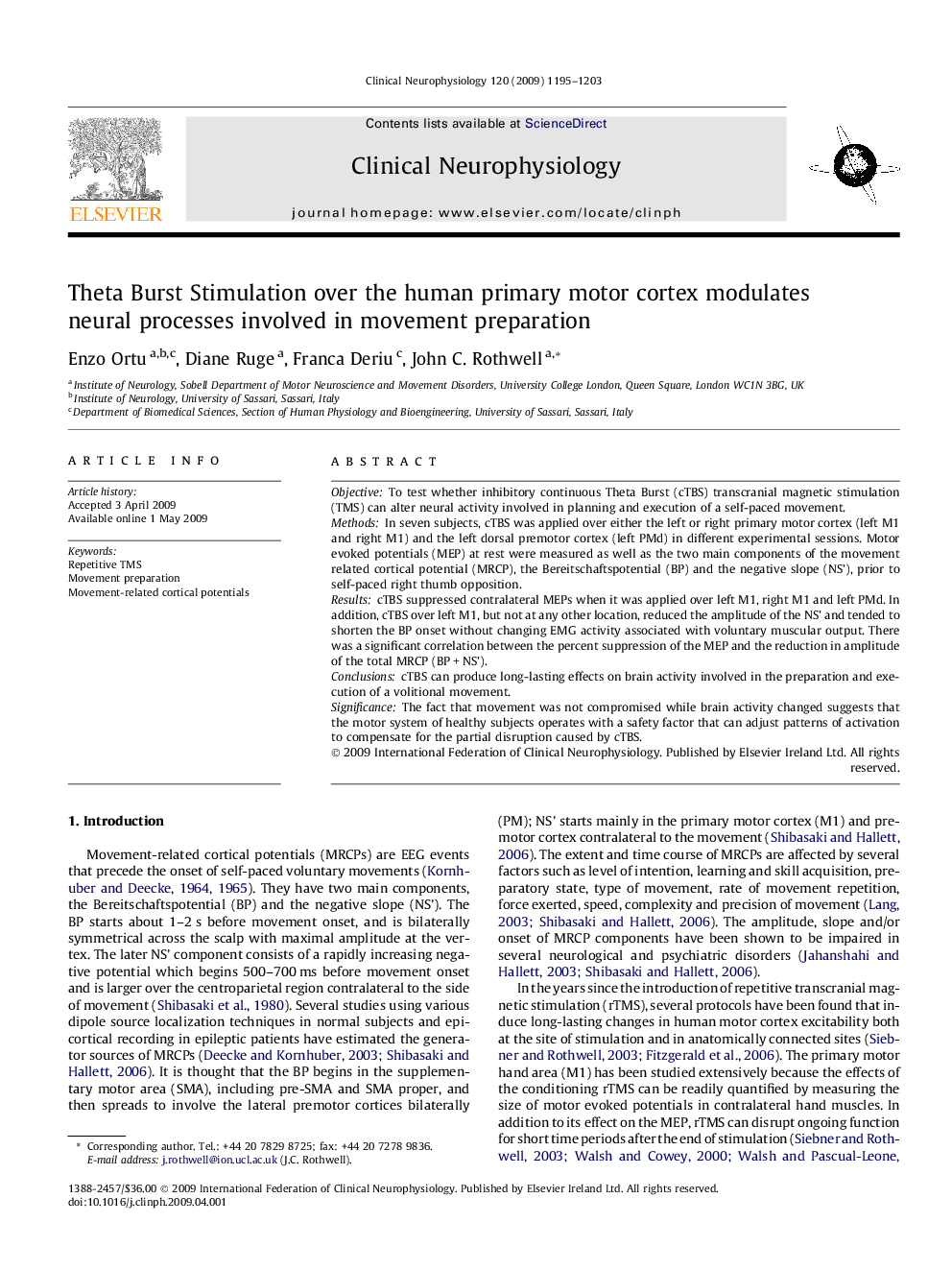| Article ID | Journal | Published Year | Pages | File Type |
|---|---|---|---|---|
| 3046543 | Clinical Neurophysiology | 2009 | 9 Pages |
ObjectiveTo test whether inhibitory continuous Theta Burst (cTBS) transcranial magnetic stimulation (TMS) can alter neural activity involved in planning and execution of a self-paced movement.MethodsIn seven subjects, cTBS was applied over either the left or right primary motor cortex (left M1 and right M1) and the left dorsal premotor cortex (left PMd) in different experimental sessions. Motor evoked potentials (MEP) at rest were measured as well as the two main components of the movement related cortical potential (MRCP), the Bereitschaftspotential (BP) and the negative slope (NS’), prior to self-paced right thumb opposition.ResultscTBS suppressed contralateral MEPs when it was applied over left M1, right M1 and left PMd. In addition, cTBS over left M1, but not at any other location, reduced the amplitude of the NS’ and tended to shorten the BP onset without changing EMG activity associated with voluntary muscular output. There was a significant correlation between the percent suppression of the MEP and the reduction in amplitude of the total MRCP (BP + NS’).ConclusionscTBS can produce long-lasting effects on brain activity involved in the preparation and execution of a volitional movement.SignificanceThe fact that movement was not compromised while brain activity changed suggests that the motor system of healthy subjects operates with a safety factor that can adjust patterns of activation to compensate for the partial disruption caused by cTBS.
